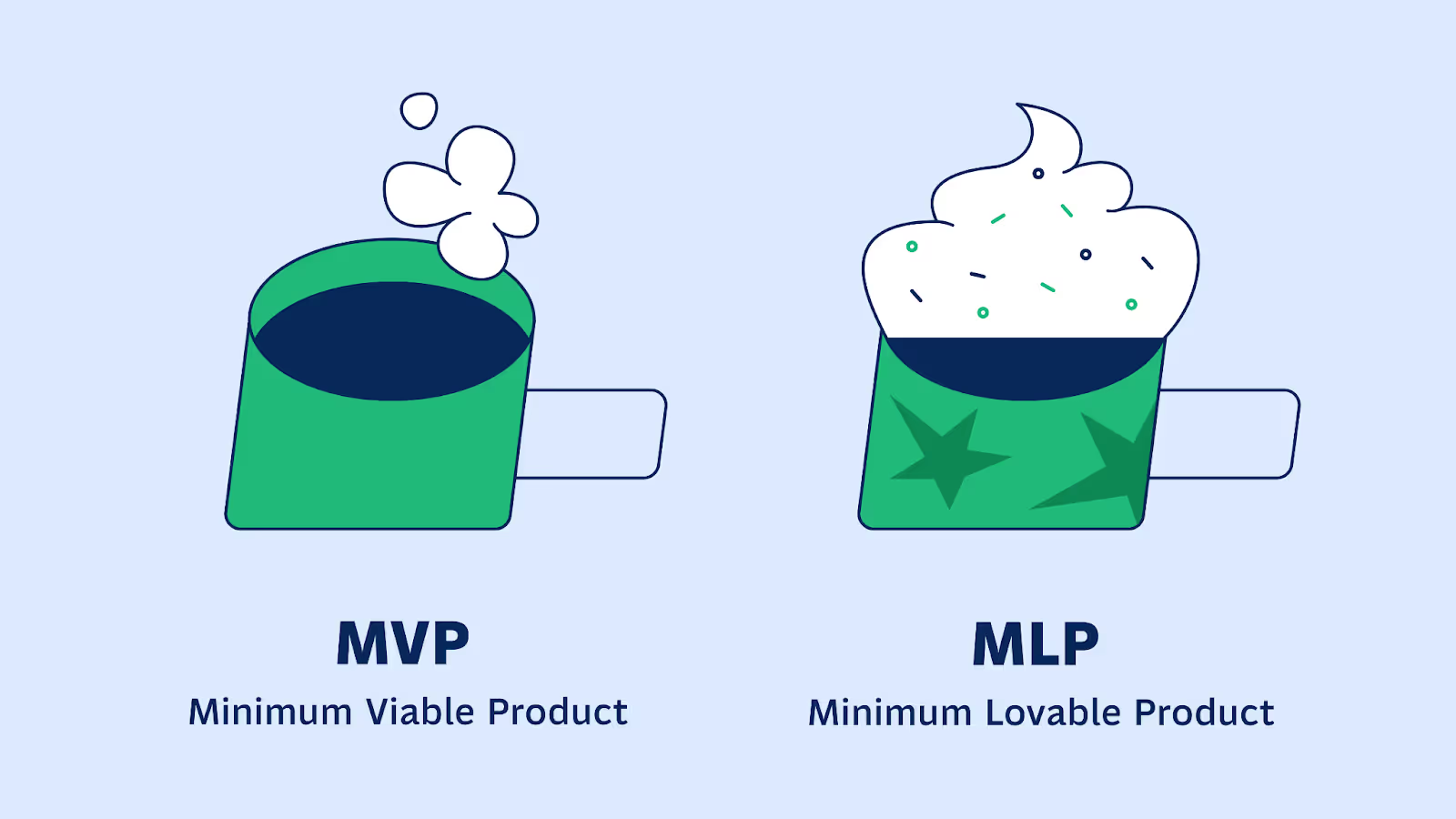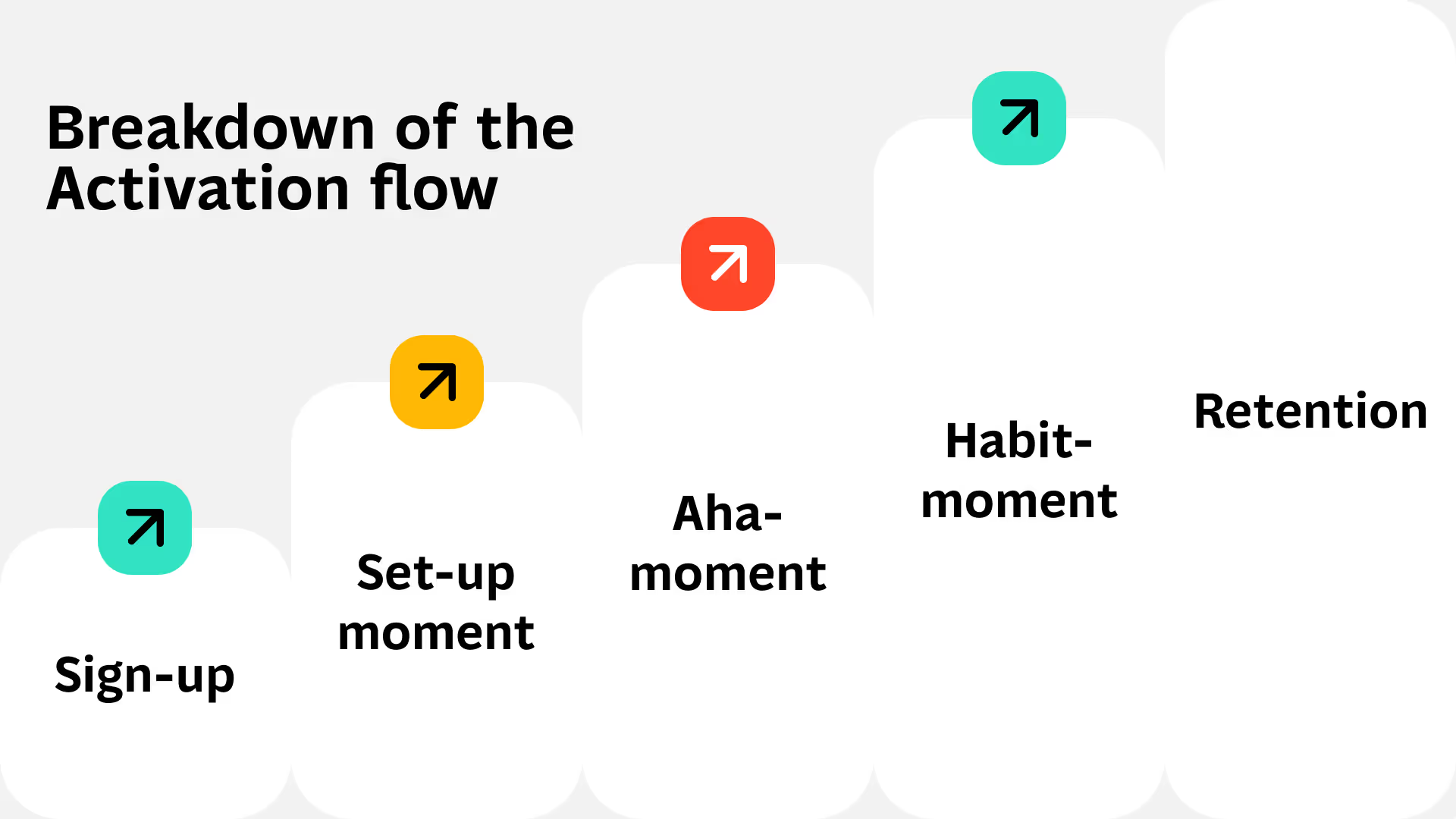In today's saturated market, users are increasingly harder to please. And while it’s easier than ever to launch a product, mere functionality isn't enough. New products must resonate emotionally and captivate users right from the start.
This heightened demand for engagement is where the concept of the Minimum Lovable Product (MLP) comes into play, aiming to deliver not only functionality but also a delightful and memorable user experience.
This article features how you can do that. Let’s dive right in.

What’s a minimum lovable product?
In 2013, Brian de Haaff, co-founder and CEO of Aha!, initially presented the idea of the MLP, and further elaborated on it in his 2016 bestselling book, "Lovability". He emphasized that focusing on an MLP is crucial for fostering customer satisfaction, which in turn drives sustained business expansion.
In other words, a minimum lovable product aims to build a delightful experience while investing as little resources as possible, so that you could gauge market feedback.
Sounds awfully similar to an MVP? – Because it is. Let’s cover the major differences.
MLP vs MVP (minimum viable product)
Here’s how Eric Ries, the author of The Lean Startup, describes what an MVP is:
“The minimum viable product is that version of a new product which allows a team to collect the maximum amount of validated learning about customers with the least effort.”
That said, MVPs and MLPs are not mutually exclusive. You could look at an MLP as an MVP upgrade.

Now here’s a more comprehensive comparison:
Is MLP right for you?
When considering whether a Minimum Lovable Product is the right approach for your product launch, several factors come into play, especially when aiming for rapid market entry.
Fast Time-to-Market
In scenarios where the time-to-market needs to be exceptionally quick, an MLP can be highly effective. By focusing on delivering a product that people enjoy and find meaningful from the outset, you can establish a strong market presence quickly, which is crucial in fast-moving industries.
Consequently, MLPs may be less applicable for products that are technically complex to develop. Furthermore, some products require a multitude of features to meet basic functional needs, which can make the MLP approach less suitable.
Validating the Market Need
Before deciding to develop an MLP, it’s vital to have some level of validation that there’s a demand for your product. With MLPs, it’s typical to consider new saturated markets.
Common early validation methods for both MLP and MVP testing include deep user interviews, analyzing competitors’ feedback, Kickstarter campaigns, etc.
{{case-study}}
Entering a Saturated Market
The decision to go with an MLP becomes even more pertinent when entering a market flooded with well-designed, aesthetically pleasing products. In such markets, users have exceptionally high expectations. Doing what your product purports to do is not a differentiator.
What you can do instead, is offer an experience that goes beyond what the competition offers. This is the path that, in their time, Slack, Instagram, and Canva took.
How to build a minimum lovable product
Gauging the market
At the very early stages of product development, MVP’s and MLP’s are not that different. In both cases, you need to look for signs the idea is worthwhile.
Typically, this impulse to build a product has 2 sources:
- Founders’ personal experience
- Access to unique data or tech
On top of the impulse, it’s advisable to look for further clues. Industry reports, competitor research and deep interviews may offer additional insights. Statista, for instance, is a good start.

You need design expertise from day one
If you’re going to zero in on making the product lovable, you need to design a lovable experience. To do that, you really need a designer who knows what they’re doing. Exceptional experiences don’t get created spontaneously. That's particularly important for SaaS products, where software is the entire value proposition.

Here’s a very basic product flow. Adding delighters – both within the product and on the overall journey – needs to be in the works from the get-go. UX designers are best suited to make that happen.
Gather market feedback
It’s not always clear-cut whether your product is actually loveable enough. That would be something that’s good to know before you invest too much into marketing. What you could do is develop a prototype, and use it as the basis for research.
Here are a few good indicators that you’re moving in the right direction:
Positive qualitative feedbacksome text:
- Are the things you planned to elicit delight doing that?
- Are you solving a problem?
Usability is top-notch:
- Nothing kills love faster than usability problems.
- Kickstarter interest/people join waitlists
- People get excited about the idea when you talk about it on social media
In practical terms, a prototype would look something like this.

MLP’s need fast iterations
Launching new products is easier than ever, making rapid market entry crucial. For Minimum Lovable Products, fast iterations are key. This approach ensures that products have a shot at fostering an emotional connection.
Therefore, MLPs must quickly adapt and evolve through continual user feedback, refining features and enhancing user satisfaction with each update. This swift iterative process is essential for maintaining relevance and appeal in a crowded marketplace.
Lean into asymmetric growth strategies
Marketing isn’t going to take care of itself. If a product is lovable, it strongly suggests that people are predisposed to spreading the word. That’s why you should nudge users to do just that when the right moment comes. Social media, for instance, is a good medium for that.

A more recent product development trend is product-led growth. This approach aims to create such products that have in-built growth mechanics. That way, user acquisition is more natural and effective.
What makes a product loveable
We’re going to list a few options for you. It doesn’t mean you have to chase everything at once. However, here are a few ways.
Aesthetics & Illustrations
Below, is an example of a set of illustrations we did for a fintech product. Are nice illustrations essential? – If you want to stand out in a competitive finance market, then yes. A loveable product must feel pleasant to use.

Micro animations
Micro animations enhance an MLP by adding delightful visual feedback that makes user interactions intuitive and engaging. These subtle cues help reduce cognitive load and improve usability, fostering a deeper emotional connection with the product and elevating the user experience.
Community
Building a community around a product can significantly enhance its status as a Minimum Lovable Product. A prime example is the "Build in Public" community on Twitter (now X). This community helps get people excited about your product while it’s being built. That way, you may have a fan base from day one. Needless to day, this helps a ton with product retention.

Other products like Arc, Raycast, and Linear have also successfully cultivated communities by appealing to specific user needs and maintaining open lines of communication with their users. These communities contribute to the product's evolution, ensuring that it remains relevant and beloved by its users.

Branding & authentic identity
A well-crafted brand resonates with users on an emotional level, creating a sense of connection and loyalty that transcends mere functionality. This emotional resonance is crucial for an MLP, as it helps the product stand out in a saturated market.
Branding that aligns with the values and aspirations of its target audience can turn ordinary users into passionate advocates. Furthermore, a consistent and authentic identity ensures that every interaction with the product reinforces these emotional connections, enhancing user satisfaction and fostering long-term loyalty.
A prominent example of authenticity is Acorns, an investment solution. They look very distinct, especially compared to more traditional banking products.

Additionally, we’ve recently built an app with a unique and distinct visual language called Doobi. This helped our product stand out from the competitors.

Conclusion
Developing a Minimum Lovable Product is undoubtedly challenging, but it is entirely achievable with the right approach. We have equipped you with the essential tools needed to create an MLP that resonates with users and stands out in the competitive landscape.
Should you require further assistance or wish to deepen your understanding, do not hesitate to contact us. We're here to help you succeed in your journey to create a product that's not only functional but truly loved.
Discover how we helped build a full-fledged product from an MVP.

Frequently Asked Questions
A minimum lovable product focuses not just on the bare minimum set of features but also on creating an emotional connection with users, while a minimum marketable product emphasizes time and resources to get it to market faster.
Start with proof of concept, gather feedback from your target market, and refine the product features until you have enough features to be usable and memorable.
Unlike an early product built just to test viability, an MLP also delights your users, improves the product based on customer experience, and builds a loyal customer base.
Future product development depends on solving the problem effectively, ensuring the version of your product evolves from initial product to a better product that customers love.
By analyzing pain points, customer base, and development process, a product manager can see if creating a minimum lovable product will drive long-term product success.
The differences between the two come down to whether you aim for a product that solves functional needs only or a product that users enjoy and remember.
Agile enables product builders to develop a version of a product quickly, use your product in real environments, and continuously improve the product based on feedback.
Focus on a minimum number of features, but design them so that the product experience feels lovable, memorable, and delightful.
By designing for customer experience and product success, you build a version of their product journey that makes the product memorable and meaningful.
A product as a result of market-first thinking may reach launch quickly, but without creating an emotional connection, it risks being like an MVP—functional but forgettable.
Because early product decisions affect customer base growth, product strategy, and whether your product is remembered as just usable or truly lovable.
Heading 1
Heading 2
Heading 3
Heading 4
Heading 5
Heading 6
Lorem ipsum dolor sit amet, consectetur adipiscing elit, sed do eiusmod tempor incididunt ut labore et dolore magna aliqua. Ut enim ad minim veniam, quis nostrud exercitation ullamco laboris nisi ut aliquip ex ea commodo consequat. Duis aute irure dolor in reprehenderit in voluptate velit esse cillum dolore eu fugiat nulla pariatur.
Block quote
Ordered list
- Item 1
- Item 2
- Item 3
Unordered list
- Item A
- Item B
- Item C
Bold text
Emphasis
Superscript
Subscript

